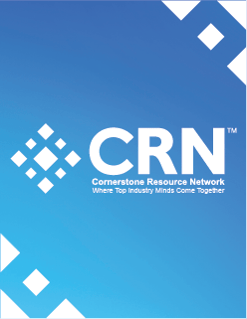4 min read
Technology Considerations in Commercial Lending Transformations
By: Joe Ganzelli on Mar 13, 2018 9:38:53 AM

As many community banks focus on growing their commercial lending businesses, many are embarking on transformation initiatives to improve their capabilities and competitiveness.
Not surprisingly, many look to technology to support the transformation.
Technology decisions can unduly—and sometimes unwittingly—drive the transformation process, however. We’ve seen numerous banks make critical technology investments before they thoroughly defined the business issues they were looking to address.
Typically, technology solutions are evaluated as a part of a larger effort to improve process efficiency and throughput, reduce costs and cycle times, improve data integrity and reporting, and other defined transformation business case objectives.
It’s important, however, that technology solution features and functionality not drive transformation activities. Well-documented, user-vetted, and clearly defined future state process and business requirements should be the basis for technology investment decisions.
Take, for example, the growth and popularity of a highly configurable loan origination system (LOS), which can permit bankers to build highly customizable LOS workflows mirroring the life of a loan. An LOS enables banks to define and configure customer relationship management data, credit request and underwriting data, spreading and risk analysis tools, work stages and credit approvals mirroring the bank’s own processes, forms and borrower communications, and “off the shelf” third party integrations to support key loan processes (credit bureaus, due diligence searches, collateral valuations).
This ability is extremely valuable, but it fails to achieve transformation goals in the absence of two important technology considerations in commercial lending transformations: 1) user experience, and 2) data strategy.
The Importance of the User Experience
It seems like an obvious statement to make, but commercial borrowers are consumers too. So why wouldn’t they want the technology-driven conveniences they experience with the retail banks, retailers and other providers they deal with in their commercial banking experiences? They don’t turn off those expectations just because it’s a commercial loan process.
Many commercial borrowers have stopped using portals because they can’t easily view their loan status, perform self-service, and expedite their loan closing. Consumerizing the commercial customer experience—i.e., making the commercial banking experience slick, intuitive and appealing—is an important step in the transformation journey.
But improving the user experience is rarely a goal of a lending transformation. Banks neglect this crucial area by:
- Not considering the perception of the user interface (user thinks “this is intimidating and not intuitive”)
- Not balancing critical versus optional data (“I’ll just enter dummy data if it’s a required field”)
- Not prioritizing (or even including in scope) the benefits of improved process transparency (e.g., accelerated loan closings and borrower online access to submit a credit request, view decision status and upload due diligence documents are “nice to haves”)
- Not defining, implementing and reinforcing a communication strategy to ensure widespread internal user and borrower acceptance and utilization of transformation technologies (“this new process seems like more work and I don’t see how it will help me close my loan quicker”)
For internal users, consideration and improvement of user experience seems obvious, but we rarely see this expressly defined as a priority transformation objective. Best practices call for active user engagement not only in business requirements definition, but also in user interface design. Iterative user testing and engagement during technology buildout is the key to ensuring user acceptance and satisfaction with the deployed solutions.
Similarly, opportunities to improve and differentiate the institution’s competitive positioning and borrower experience are also infrequently seen as prioritized transformation objectives. Improving borrower accessibility to and transparency in the credit process; exceeding expectations on credit decisions, loan closing and funds availability; and differentiating the institution from its primary lending competitors in these important areas are not often primary considerations in a transformation initiative.
Given the significant financial and human resource investments of a commercial lending transformation, the opportunity to improve the borrower experience, and the institution’s competitive advantage, the user experience needs to uniformly be a key consideration in all transformation efforts.
The Need for a Unified Data Strategy
An overall data strategy to improve the quality and integrity of data collected throughout the life of a loan, and to support current and prospective reporting needs is often an afterthought in many commercial lending transformations.
Regulators and investors increasingly demand demonstrable data integrity, reporting accuracy and agility—all of which impact commercial lending transformation initiatives. The Basel Committee on Banking Supervision’s (BCBS) report 239, “Principles for Effective Risk Data Aggregation and Reporting,” sought to address the weak risk data aggregation capabilities and risk reporting practices that became evident during the financial crisis when many institutions were unable to quickly and accurately aggregate their risk exposures and appropriately identify portfolio concentrations. BCBS 239 applies to global systematically important banks (G-SIBs); however, all financial institutions face similar regulatory scrutiny and pressure to demonstrate their ability to nimbly assess risk exposures and to address loan data integrity concerns related to outmoded technologies, manual and poorly documented processes, and procedural deficiencies.
Many institutions ideally strive to achieve straight through processing (STP) as a result of their commercial lending transformation initiatives, with goals of optimized efficiency and data integrity (via the elimination of duplicate data entry and validation of critical data elements) and, ideally, automated loan accounting system boarding.
However, most assume that all vendor solutions can readily provide a full STP (i.e., through loan boarding) and, as a result, the related interface effort is often under-scoped and under-estimated. Full STP is often moved to a “day two” initiative that, in many cases, is never realized. As a result, shadow files, tracking spreadsheets and databases, the rekeying of loan data to board the loan (i.e., collateral, guarantors, repayment schedules, etc.) and other manual processes continue. Transformation stakeholders—particularly users, lines of business and executive management—are disappointed when the promised efficiency, cost and data integrity gains are not realized.
When it comes to incorporating technology into the commercial lending transformation, banks must understand what their chosen solution can and cannot accomplish regarding standard integration tools before they fully define and finalize their business cases.
We have seen institutions define a business case reflecting ambitious cost savings related to STP, but when STP is subsequently deferred or otherwise not fully realized, the business case supporting the transformation is similarly not fully realized. Ask yourself:
- Is the generation of a loan-boarding sheet to facilitate manual boarding and data rekeying the “off the shelf” option?
- What clients have integrated their solution to your institution’s accounting system?
- Was this accounting system integration accomplished within the original project scope and implementation timeframe?
- Are both new entity creation and existing entity change transactions in scope? New and renewal/modification loans? Credit servicing actions (e.g., collateral or guarantor release/substitution and covenant monitoring/waivers)?
Only when armed with this information will banks be able to construct a realistic transformation business case, timeline and prioritized objectives.
5 min read
The Holy Quest for CRM in Anytown, USA
Apr 25, 2024by Elizabeth Gujral
7 min read
Where Does Chime Go From Here?
Apr 4, 2024by Ron Shevlin

.png?width=1000&height=250&name=Cornerstone_Advisors_Logo-removebg-preview%20(1).png)



-2.png?width=247&height=320&name=MicrosoftTeams-image%20(36)-2.png)
-2.png?width=247&height=320&name=MicrosoftTeams-image%20(35)-2.png)